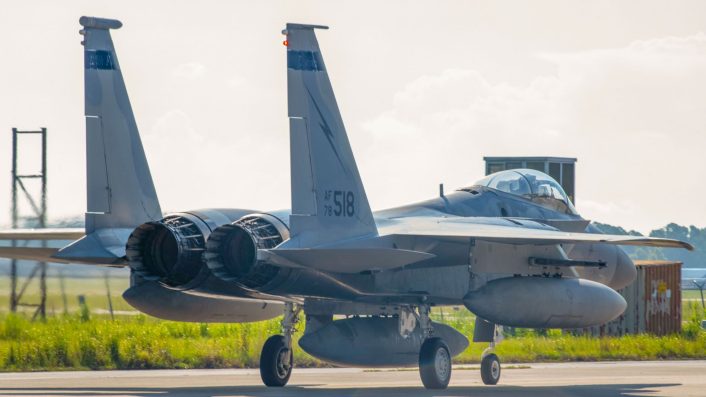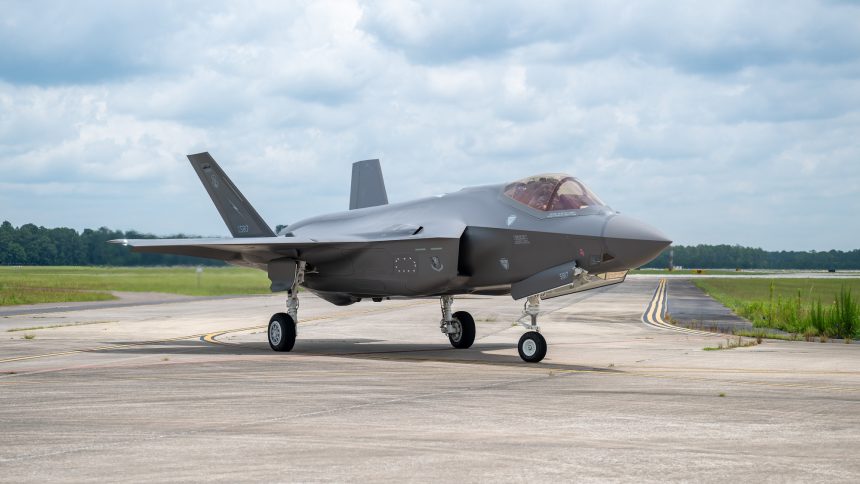The 125th FW received its first three F-35As, which will join the ones loaned from sister Air National Guard units for conversion and familiarization training.
The Florida Air National Guard’s (ANG) 125th Fighter Wing at Jacksonville ANGB announced on Aug. 21, 2025 that it received its first three permanently assigned F-35A Lightning IIs, marking its transition to the fifth generation jet from the legacy F-15C/Ds. Although it was announced only recently, the delivery happened on Jul. 9, said the service.
Among the three aircraft delivered was also the 500th F-35A delivered by Lockheed Martin to the Air Force, which according to the photos released by the service is the aircraft with the serial AF 22-5817. All three jets bear the 125th FW’s legacy tail flash to represent its nickname “the Thunder,” as well as the unit’s coat of arms outside the starboard (right-side) engine nacelle, and the Air National Guard logo on the top part of the vertical stabilizer.
The 125th oversees a sole fighter aircraft unit, the 159th Fighter Squadron (159th FS). The unit’s commander, Lt. Col. Joseph Pasko, was among the pilots who flew the three jets to their new home.
𝐍𝐄𝐖𝐒 𝐒𝐓𝐎𝐑𝐘: 𝟏𝟐𝟓𝐭𝐡 𝐅𝐢𝐠𝐡𝐭𝐞𝐫 𝐖𝐢𝐧𝐠 𝐑𝐞𝐜𝐞𝐢𝐯𝐞𝐬 𝐅𝐢𝐫𝐬𝐭 𝐏𝐞𝐫𝐦𝐚𝐧𝐞𝐧𝐭𝐥𝐲 𝐀𝐬𝐬𝐢𝐠𝐧𝐞𝐝 𝐅-𝟑𝟓𝐬
“These new F-35s, which include the Air Force’s 500th, represent the forefront of fifth-generation airpower,” said U.S. Air Force Lt. Col. Joseph… pic.twitter.com/9VpsIR4w9E
— FloridaNationalGuard (@FLGuard) August 21, 2025
These aircraft now join three other F-35As, two from the Wisconsin ANG and another from the Alabama, ANG that were loaned to Jacksonville ANGB in March 2025 as part of a “conversion team” to help prepare Operations Support and Maintenance Squadrons (MXG) for the new jet. Jacksonville ANGB’s 125th FW is also the fourth ANG unit to fly the F-35, after units in Vermont (158th FW), Wisconsin (115th FW) and Alabama (187th FW), and one of nine units in the overall USAF.
🎥: Another first in the books! 📖
The first F-35A Lightning II aircraft permanently assigned to the Florida Air National Guard’s 125th Fighter Wing taxis on the flight line after landing at Jacksonville Air National Guard Base.
This delivery marks a key milestone in the wing’s… pic.twitter.com/CHCsXL8JWH
— F-35 Lightning II Joint Program Office (@theF35JPO) August 19, 2025
Significance
The F-35s’ arrival at Jacksonville ANGB comes amid a broader push within the U.S. Air Force to field fifth-generation airpower, and while the 125th FW executes a multi-year transition from the F-15C/D Eagles. The unit will “continue flying a mix of its own aircraft and aircraft loaned by various Air National Guard sister units during this phased transition, allowing the wing to maintain mission readiness without interruption,” the Aug. 21 press release added.
“These new F-35s, which include the Air Force’s 500th, represent the forefront of fifth-generation airpower,” said U.S. Air Force Lt. Col. Joseph Pasko, commander of the 159th Fighter Squadron. “We expect to play an integral role in potential future conflicts, and our citizen-Airmen stand ready to answer the nation’s call; anytime, anywhere.”
The delivery also reinforces “the Air National Guard’s role in providing integrated, combat-ready airpower.” The press release stressed on the F-35’s defining “stealth, sensor fusion and electronic-warfare capabilities, outpacing the fourth-generation Eagles that the wing retired late last year.”
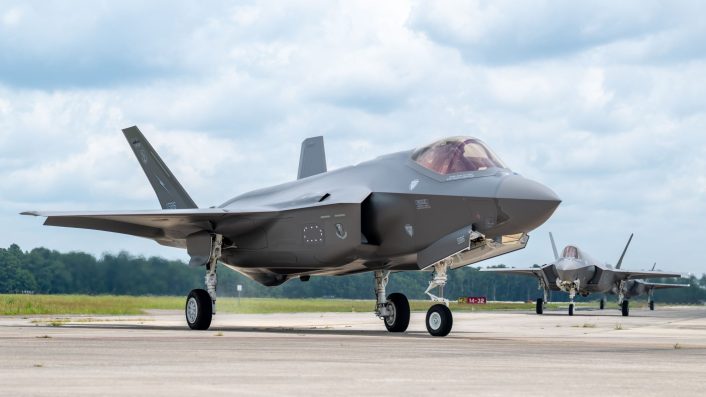
This boosts the USAF’s airpower along the southeastern region and bolsters its homeland defense and global force projection goals. The Mar. 4 press release by the 125th FW also noted Florida being home to the Naval Station Mayport and Naval Air Station (NAS) Jacksonville, along with Jacksonville ANGB, fostering joint-force integration. Florida also hosts Tyndall and Eglin AFBs. “The introduction of the F-35 strengthens interoperability between the Air Force, Navy, and Marine Corps, reinforcing Florida’s role as a national security hub,” said the 125th FW.
To sustain the Lightning II, the base has built a new simulator complex, upgraded hangar ventilation for low-observable maintenance, began construction on a climate-controlled weapons-load facility, and coordinated with the Jacksonville Aviation Authority to widen taxiways at Jacksonville International Airport. Commander of the 125th Maintenance Group (125th MXG) Col. Carl Guckenberger said the Airmen have completed “thousands of hours of formal training” on the new jets.
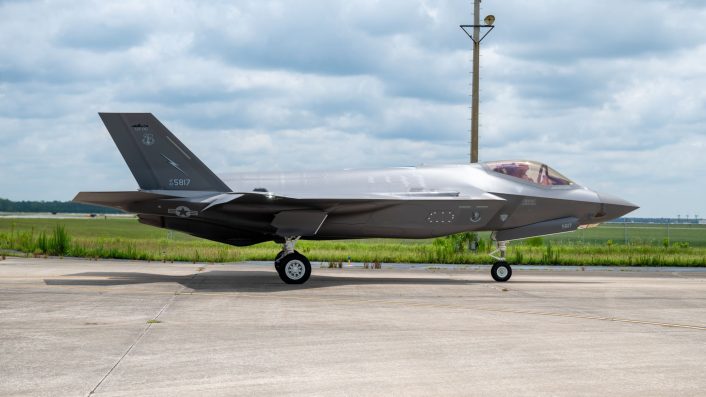
F-35’s future
Lockheed Martin reported in mid-July that it cleared its F-35 delivery backlog, after long-standing issues with the new Technology Refresh-3 (TR-3) software code that supports the future Block 4 upgrades. This comprises improved computing, sensor fusion, data processing, electronic warfare, target acquisition and weapons capabilities.
Breaking Defense quoted Lockheed Martin’s head of aeronautics division Greg Ulmer and vice president for business development J.R. MacDonald who said, as of early June, the company had delivered 200 F-35s in the TR-3 configuration, while forecasting a delivery of 170-190 aircraft this year.
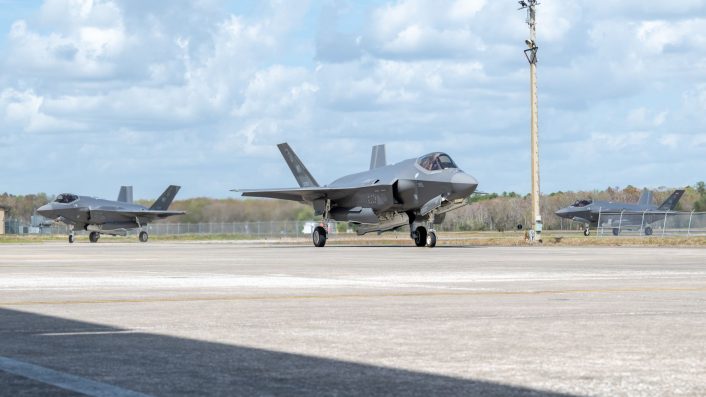
The company’s efforts to speed up F-35 deliveries also come amid reduced F-35 acquisition in the FY2026 budget, as the aircraft contributes about 30% of its revenue. Defense News reported that the Air Force would procure only 24 F-35As in 2026 for roughly $4 billion, less than the 44 F-35s, costing $4.8 billion, the Air Force is on track to buy this year, and the 51 jets, worth $5.5 billion, the service bought in 2024.
In the Mar. 4 press release, 125th FW commander Col. Mansour Elhihi called the F-35 a “cornerstone” of U.S. military power that “directly supports national security objectives […] to respond, dominate, and win in any battlespace.” Both the releases also mentioned the 125th FW’s induction of the F-35A being consistent with the Air Force’s stress on Agile Combat Employment (ACE) operations concept.
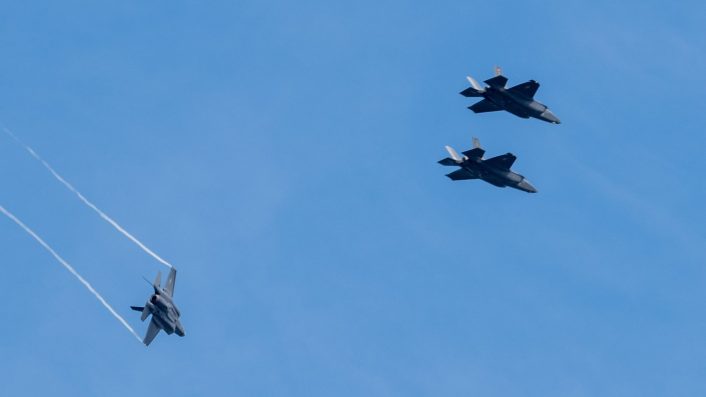
The ‘China challenge’
In a rare instance, the press release explicitly named China as the country with the burgeoning military capabilities that is driving the Air Force’s F-35 push – unusual for a service branch to make a political statement. The references to Beijing are usually framed as “peer” conflict, “high-end war” or “great-power competition.” This reflects the sense of unease that has gripped the service with the reduced F-35 order.
The release said: “The arrival coincides with recent testimonies by Department of the Air Force leadership before a Senate defense subcommittee to stress the importance of expanding air and space dominance. During the hearing, they outlined that the department’s fiscal year 2026 budget request prioritizes defending the homeland and bolstering defenses in the Indo-Pacific region, where China is the pacing threat.”
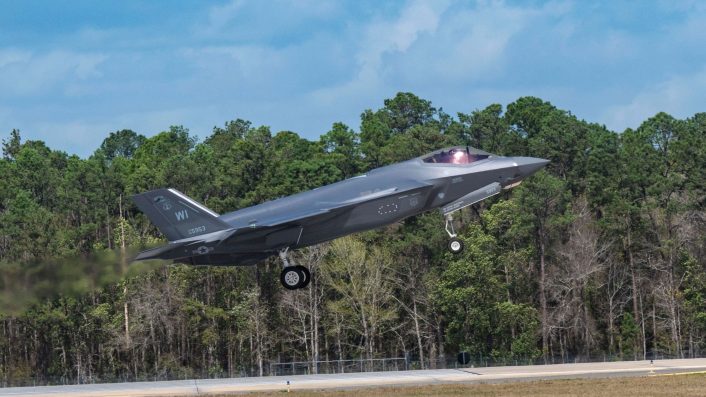
It then quoted USAF Chief of Staff Gen. David Allvin’s statement before the lawmakers, who pointed out that not only is the People’s Republic of China “rapidly modernizing its military, but doing so with a clear intent to coerce its neighbors and reshape the international order.”
Allvin further added “the United States must maintain airpower dominance if we are to safeguard our security, deter aggression, and prevail in conflict.”
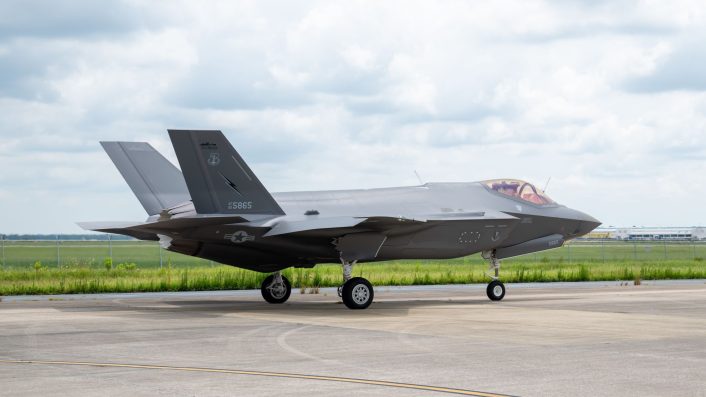
The service has been aiming to qualitatively enhance its presence in the western Pacific with the PACAF (Pacific Air Forces) deploying the advanced F-15EX and more F-35A Lightning II jets. The new capability enhances options for a possible high-end war with an increasingly capable China in the Indo-Pacific.
On Jul. 12, 2025, two F-15EX Eagle IIs from the 85th Test and Evaluation Squadron, out of Eglin AFB, arrived at Kadena Air Base, Japan, accompanied by an F-15E Strike Eagle and an F-16C Fighting Falcon of the same unit. This was to help train Kadena AB, which hosts the 44th and 67th Fighter Squadrons under the 18th Wing, for the future arrival of the F-15EX.
